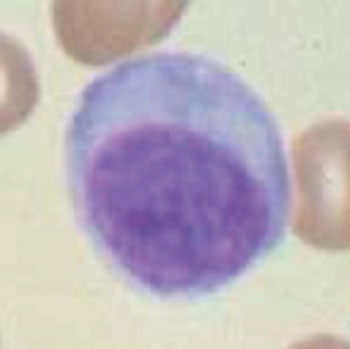Circulating Biomarker for Autoimmune Disease Activity Identified
By LabMedica International staff writers
Posted on 22 Jun 2015
A circulating biomarker has been identified that shows potential for monitoring autoimmune diseases such as multiple sclerosis and lupus erythematosus.Posted on 22 Jun 2015
The biomarker is a soluble fragment of the plasma cell membrane-bound receptor protein BCMA (B-cell maturation antigen). Plasma cells, also called plasma B-cells, plasmocytes, and effector B-cells, are white blood cells that secrete large volumes of antibodies. Like all blood cells, plasma cells originate in the bone marrow and are transported by the blood plasma and the lymphatic system. B-cells differentiate into plasma cells that produce antibody molecules closely modeled after the receptors of the precursor B-cell. Once released into the blood and lymph, these antibody molecules bind to the target antigen and initiate its neutralization or destruction. Survival of plasma cells in circulation is regulated by the membrane-bound receptor protein BCMA, activated by its agonist ligands BAFF (B-cell activating factor) and APRIL (A proliferation-inducing ligand).

Image: Micrograph of plasma cell with distinct clear perinuclear region of the cytoplasm containing a large number of Golgi bodies (Photo courtesy of Wikimedia Commons).
Investigators at Ludwig Maximilian University (Munich, Germany) reported that the enzyme gamma-secretase directly cleaved BCMA, without prior truncation by another protease. This direct shedding was facilitated by the short length of BCMA’s extracellular domain. Gamma-secretase is a multi-subunit protease complex, itself an integral membrane protein, that cleaves single-pass transmembrane proteins at residues within the transmembrane domain. The cleaved BCMA fragment was found to be stable and could be detected in body fluids as soluble BCMA (sBCMA).
Analysis of clinical samples from patients with multiple sclerosis or lupus erythematosus indicated that the molecule could serve as a useful biomarker for autoimmune disease. In multiple sclerosis, sBCMA levels in spinal fluid were elevated and associated with intracerebral IgG production; in systemic lupus erythematosus, sBCMA levels in serum were elevated and correlated with disease activity.
In vivo, inhibition of gamma-secretase enhanced BCMA surface expression in plasma cells and increased their number in the bone marrow.
"Up to now, gamma-secretase was only known to be involved in the degradation of membrane proteins that had already been cleaved by other enzymes," said senior author Dr. Edgar Meinl, group leader in the institute of clinical neuroimmunology at Ludwig Maximilian University. "BCMA is the first natural substrate of gamma-secretase to be identified that is directly cleaved by the enzyme and probably reflects the fact that the extracellular segment of the receptor is unusually short.
"sBCMA is an indicator of the intensity of ongoing immune reactions," said Dr. Meinl. "So, sBCMA is therefore well suited to serve as an informative clinical parameter for the assessment of the therapeutic effects of different treatment regimes on plasma cells."
The paper was published in the June 11, 2015, online edition of the journal Nature Communications.
Related Links:
Ludwig Maximilian University












.jpg)
